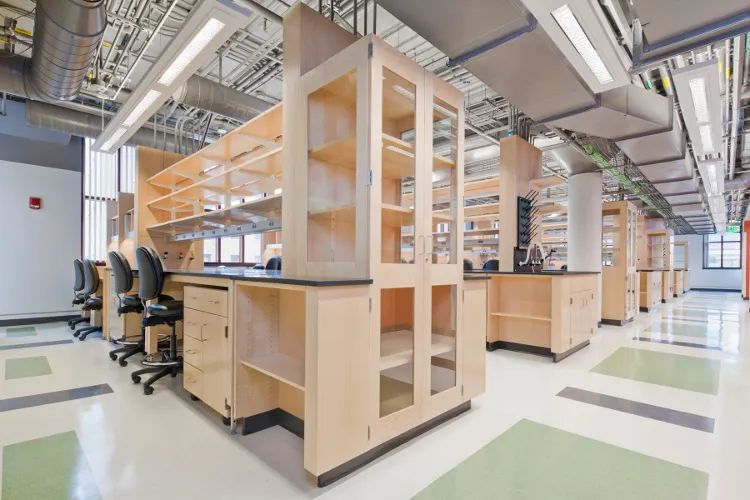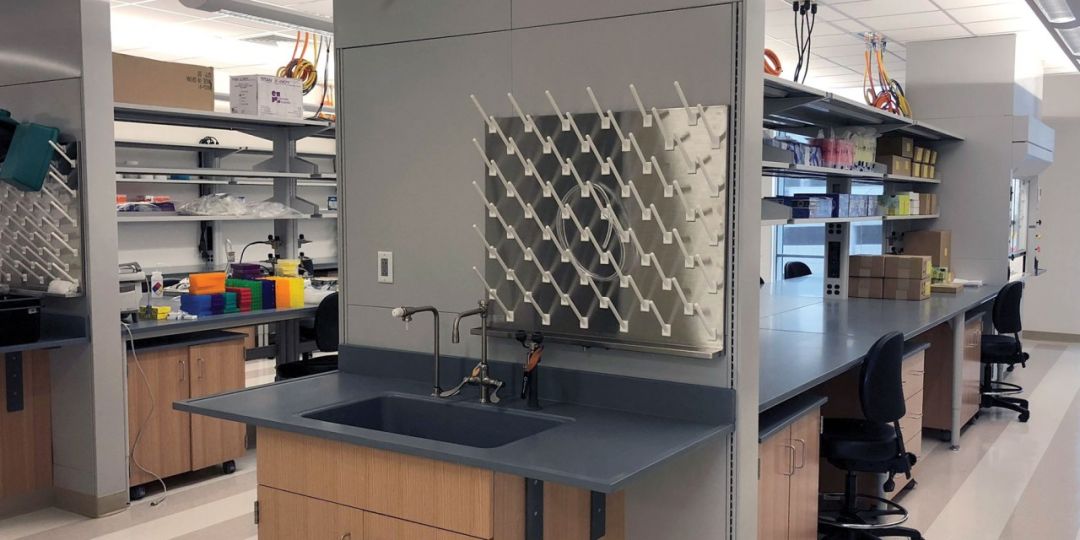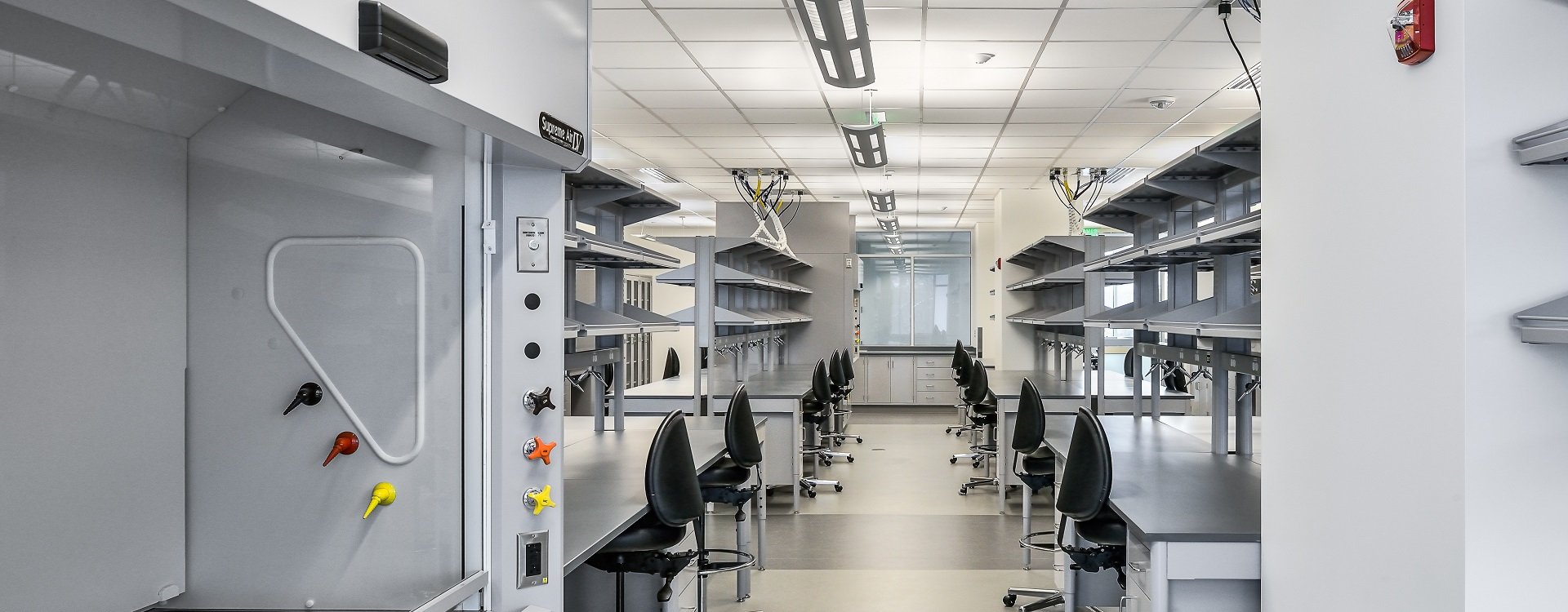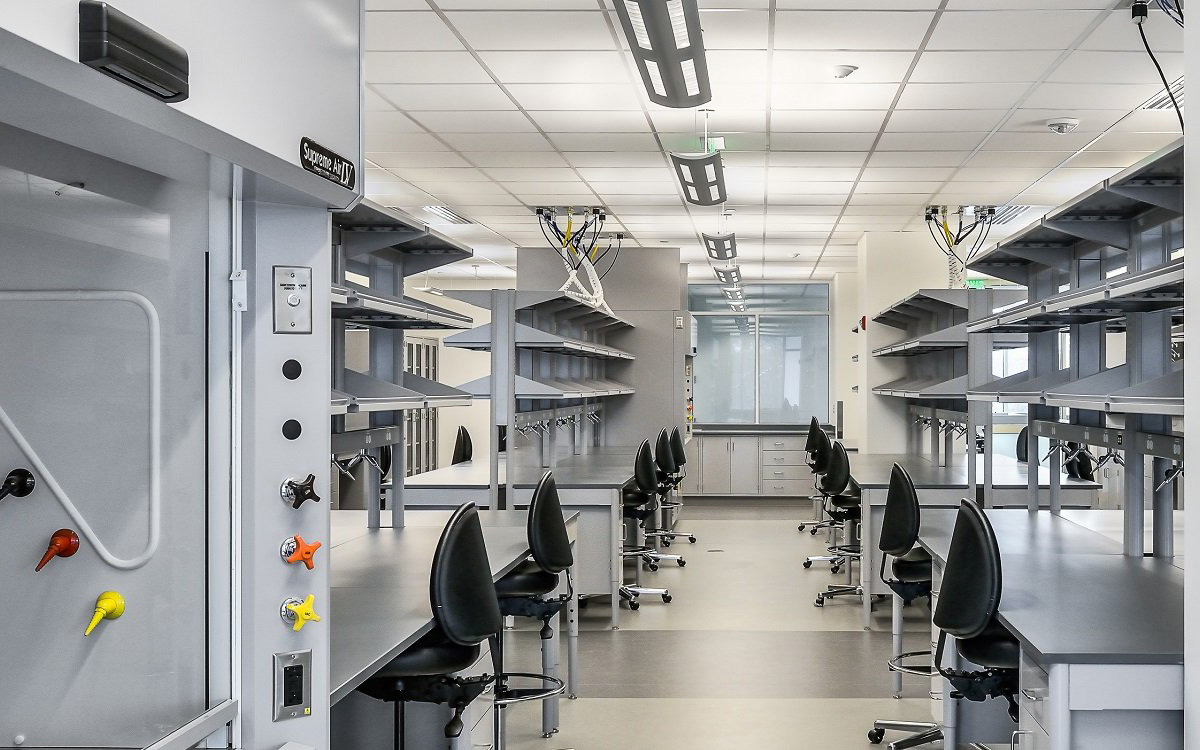How to Choose Laboratory Furniture Materials
Date: 2022-01-19 Source: RUANQI Classification: Resources

Please carefully check the advantages and disadvantages of various materials before choosing decoration materials.
Once the type of laboratory furniture (fixed or mobile) is determined, there are still many choices about which material to choose. Need to assess the budget, furniture function, continuous wear and tear, chemicals to be used and cleaning requirements. Before making the final choice, please be sure to consider the main materials that can be used for laboratory furniture and weigh the advantages and disadvantages of each material.
Your lab designer or furniture dealer will be your ideal resource. Any furniture you need is required to meet the requirements of American Laboratory Equipment Association (SEFA). SEFA was established in 1988, and established, monitored and revised (as required) the recommended practices in the fields of fume hoods, laboratory countertops, furniture installation, laboratory decoration and fixtures. This will ensure that your finished laboratory decoration meets the laboratory standards. For example, flammable cabinets should comply with NFPA 30 and be certified by UL1275. Chemical fume hood and laboratory workbench should always pass UL verification.
Laboratory table top
The laboratory table and workbench are usually the most commonly used areas in the laboratory. There are many other options besides the black epoxy resin commonly found in many laboratories. The correct material depends on the type of experiment or the work you do every day. Does the surface need to withstand chemicals or liquids or open flames? One trend is to use the color of reflected light, which will reduce artificial lighting and make your laboratory brighter. The following are some options to consider:
01 Stainless steel Advantages:
Stainless steel is a non-porous material and does not allow anything to penetrate. It was created for laboratories that need sterility, because it can't grow fungi, bacteria and molds. It also has chemical resistance and high heat resistance, and can withstand temperatures as high as 1,500°F. It can withstand the cleaning requirements of sterile areas. Type 316 stainless steel should always be used where harsh cleaning solution is to be used.
Note: It is easy to scratch and cannot treat bleaching agent, because it will leach out nickel and cause pitting corrosion.
02 Epoxy resin Advantages:
Epoxy resin has excellent resistance to almost all acids, alkalis and solvents as well as molds, fungi and bacteria. It is resistant to high temperature up to 350°F and abuse of conventional physics. According to different suppliers, there are several colors available, including black, gray, slate, white and brown.
Note: This is a dumping product, which cannot be easily modified at the site; For example, it may be difficult to try to drill holes. Compared with phenolic resin countertops or stainless steel countertops, it is easy to scratch and has poor impact resistance.
03 Phenolic resin Advantages:
For laboratories with moderate chemical work, phenolic resin should be considered. It is beneficial to the use of chlorine gas and will not change color. These materials are very light, have high durability and processability in the field, and have corrosion resistance and chemical corrosion resistance. It also has high resistance to fungi, bacteria and moisture, and can withstand shock. It can withstand temperatures as high as 350°F. There are many colors and patterns to choose from.
Note: Most varieties are not flame retardant, so it is not recommended to use them near open flames.
04 Ceramic
The main component of ceramics is natural silicate material, the surface of which is treated with special glaze and calcined at high temperature. Ceramic countertops have the advantages of strong corrosion resistance, good flame retardant performance, higher scratch resistance than stone, no moisture absorption, no deformation and so on. Long-term high temperature resistance can reach 600 degrees Celsius, which is suitable for various special experimental conditions.
Note: Not resistant to hydrofluoric acid, limited size.
05 Chopping board Advantages:
The chopping block is made of solid wood, usually hard maple. These worktops are common in many physical testing facilities or food laboratories. If the chopping block is damaged, it can be easily repaired. An important application of this material is in high impact testing equipment.
Note: Wood is highly porous, which means it can't resist chemicals well. If not cleaned properly, it can also breed bacteria.
06 high voltage laminate Advantages:
In dry areas where the use of chemicals is limited, if you are looking for something to make your budget easier, high-pressure laminate may be an option.
Laminates have a variety of colors and patterns, and have chemical resistance. Commonly used in ESD (electrostatic dissipation) applications.
Note: Although it can withstand temperatures as high as 275°F, it is not moisture-proof, mildew-proof or bacteria-resistant.
07 Stone and solid surface materials
These do not provide sufficient heat resistance and chemical resistance, so they are not recommended for routine laboratory use.
water channel

And stainless steel and epoxy resin are the most common laboratory sink materials. Stainless steel is often the most popular choice because it is easy to maintain, because with the passage of time, many chemical exposures will corrode or rust other materials. Epoxy resin is a cheaper choice and has the best resistance to many irritating chemicals used in the laboratory. Epoxy resin will break due to thermal shock, so extra care should be taken when using dry ice.
Cabinet surface material
Steel mobile cabinets have become the standard of modern laboratories, providing flexibility and adaptability for research and many academic laboratories. In order to better meet the needs of the laboratory, cabinets have many cabinet materials to choose from, which are part of the device.
Stainless steel is used in cabinets for the same reasons as those introduced at the top of the above-mentioned laboratory, for the sake of mildew prevention and moisture prevention. The high price limits its use to areas where it is really needed, such as shelter, autopsy, animal research, chemistry, food testing, clean rooms, hospitals and medical facilities, and pharmaceutical laboratories.
Steel products are very common cabinet materials in today's laboratories. Adding powder coating on the surface of steel products has the properties of corrosion resistance, abrasion resistance and chemical corrosion resistance, and can prevent chipping, peeling or cracking. It has high antifungal and moisture-proof properties and good chemical resistance. The application scope covers all kinds of laboratories, including industrial, academic, medical research and research and development. Laboratory workbench should usually be made of painted steel to improve durability and mobility. Bare steel should not be used in chemical fume hoods or acid storage cabinets.
Wood is a traditional method and tool for laboratory decoration. It is attractive, and various wood varieties and veneers create a warm atmosphere for the laboratory. The new veneer can resist the common abrasion in old wooden cabinets, although it can't provide the resistance of steel. Wood should be certified by FSC and AWI, and low VOC materials, finishes and adhesives should be used. Coloured wooden doors and drawer fronts are usually used with steel cabinets in laboratories. It is usually the standard of academic laboratories, test laboratories and some technical and research laboratories.
Laminates are made by coating melamine resin on decorative surface paper. This paper is usually bonded to kraft paper filled with phenolic resin as a decorative cabinet. Its low price makes it attractive for light and dry laboratories. Its resistance to heat, moisture, chemicals, bacteria and daily use is very low, which limits its use in many laboratories. The base material should be seven layers of hardwood plywood core to improve durability and moisture resistance. Low VOC materials are very important for laminates because many substrates contain added formaldehyde. Life is about a quarter of that of steel.
End
The choice of materials is only part of the choice of laboratory decoration. The products provided by today's manufacturers are designed to reduce the impact on the environment and meet the recyclable ingredients required by the LEED program of the American Green Building Council. Selecting durable and durable materials combined with flexible decoration that can be moved rather than fixed will make the most of the resources spent in laboratory decoration. Selecting the right materials for the laboratory will ensure the best service life and performance from the materials used in the laboratory.




